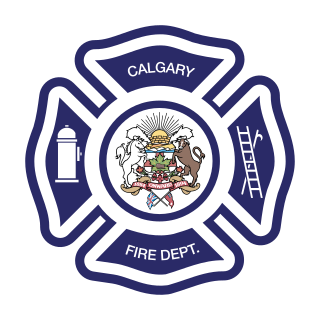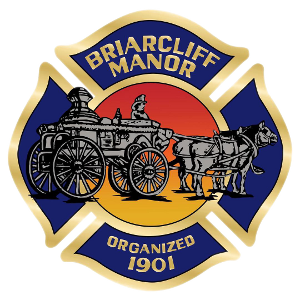
George Murdoch was a Canadian politician, Alberta pioneer, saddle-maker, and the first mayor of Calgary, Alberta.

George Clift King was the second mayor of the town of Calgary, Alberta.

James Reilly was a Canadian businessman and politician. He was the sixth mayor of Calgary, Alberta.

Bells Corners is a suburban neighbourhood in Ottawa, Ontario, Canada. It is located along Robertson Road west of downtown, within Ottawa's western Greenbelt, in College Ward. As of the Canada 2016 Census, the community had a population of 9,272.

Stephen Avenue is a major pedestrian mall in downtown Calgary, Alberta, Canada. The mall is the portion of 8 Avenue SW between 4 Street SW and 1 Street SE. It is open to vehicles only from 6:00 p.m. to 6:00 a.m.

The Calgary Fire Department (CFD) provides fire services for the city of Calgary, Alberta.

The Great Vancouver Fire destroyed most of the newly incorporated city of Vancouver, British Columbia, Canada, on June 13, 1886. It started as two land clearing fires to the west of the city. The first fire was further away from the city and was clearing land for the roundhouse of the terminus of the Canadian Pacific Railway. The second fire was clearing land to extend the city to the west. The Great Fire occurred shortly after the township of Granville was incorporated into the City of Vancouver.

The Kansas City Fire Department provides fire protection and emergency medical service for Kansas City, Missouri, and under contract to Village of the Oaks, Village of Oakwood Park, and Village of Oakwood. It provides fire protection only under contract to City of Lake Waukomis, City of Platte Woods, City of Weatherby Lake, and Village of Fertelview. In addition, it provides EMS support under contract for the City of Riverside. It operates 35 fire stations, one dedicated EMS operations facility housing dynamically deployed ambulances, organized into seven battalions and cover 318 square miles (820 km2).

Mortlach is a village in the Canadian province of Saskatchewan within the Rural Municipality of Wheatlands No. 163 and Census Division No. 7. The village is on the Trans Canada Highway about 40 km west of the City of Moose Jaw. Thunder Creek passes the community to the north where it is joined by Sandy Creek. Mortlach became a village on April 19, 1906, and is one of two towns in Saskatchewan to have been incorporated as a town to then be reverted to village status on January 1, 1949; the other is the village of Alsask.

Calgary is a city in the Canadian province of Alberta. It is the largest city in Alberta and the largest metro area within the three Prairie Provinces region. As of 2021, the city proper had a population of 1,306,784 and a metropolitan population of 1,481,806, making it the third-largest city and fifth-largest metropolitan area in Canada.

Lougheed House, or as it was originally known Beaulieu, is a National Historic Site located in the Beltline district of Calgary, Alberta. Originally constructed in 1891 as a home for Senator James Alexander Lougheed KCMG PC KC and his spouse Isabella Clarke Hardisty, the structure has since become an iconic heritage building in Calgary. Lougheed House is operated by Lougheed House Conservation Society, an independent, non-profit society devoted to the restoration and public enjoyment of the historic house and its Gardens.

Downtown East Village more commonly known as simply East Village, is a mixed-use neighbourhood within the eastern portions of downtown Calgary, Alberta, Canada. It is contained within the city's Rivers District. Containing the earliest-settled land in the Calgary area - Fort Calgary - East Village was for years a mixture of high-rise residential, commercial, and industrial development. Much of the parkland currently surrounding Fort Calgary was industrial as recently as the 1960s. Construction of the city's light rail transit Blue Line, coupled with the closure of 8th Avenue at Macleod Trail in the early 1980s by construction of the massive Calgary Municipal Building, resulted in East Village being "cut off," figuratively speaking, from the rest of downtown. As a result, it became home to many rundown properties and vacant lots over the years, and a severe crime problem.

Calgary City Hall, is the seat of government for Calgary City Council, located in the city's downtown core of Calgary, Alberta, Canada. The historic building completed in 1911 serves as the offices for Calgary City Council, consisting of the office of the Mayor, fourteen Councillors and municipal Clerk. Calgary City Hall originally housed the municipal council and portions of administration from its completion in 1911 until the construction of the Calgary Municipal Building adjacent to Old City Hall in 1985, which currently houses the offices of 2,000 civic administrators.

The Briarcliff Manor Fire Department (BMFD) provides fire protection and emergency medical services to the village of Briarcliff Manor, New York and its hamlet Scarborough. The volunteer fire department also serves unincorporated areas of Ossining and Mount Pleasant. The fire department has three fire companies, two stations, and four fire engines. Its engines include three pumpers and a tower-ladder; the department also maintains other vehicles, including a heavy rescue vehicle. The Briarcliff Manor Fire Department Ambulance Corps provides emergency medical transport with two ambulances. The fire department is headquartered at the Briarcliff Manor Village Hall, with its other station in Scarborough, on Scarborough Road.

139-141 George Street are heritage-listed former terrace houses and now shops located at 139-141 George Street in the inner city Sydney suburb of The Rocks in the City of Sydney local government area of New South Wales, Australia. It was built from 1881 to 1882. It is also known as three storey stone building. The property is owned by Property NSW, an agency of the Government of New South Wales. It was added to the New South Wales State Heritage Register on 10 May 2002.

The 1884 Calgary municipal election was held on December 3, 1884 to elect a Mayor and four Councillors to sit on the first Calgary Town Council from December 4, 1884 to January 18, 1886.

The January 1886 Calgary municipal election was held on January 4, 1886 to elect a Mayor and four Councillors to sit on the second Calgary Town Council from January 18, 1886 to October 21, 1886.

The November 1886 Calgary municipal election was held on November 3, 1886 to elect a Mayor and four Councillors to sit on the third Calgary Town Council from November 4, 1886 to January 16, 1888.















